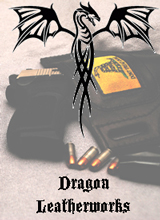Seriously, what does this gain?
Yes, he believes in making guns safer, but he’s not your typical safety advocate. He’s a gun owner himself, and he wants to control firearms in the most practical of ways. That’s why he founded Sentinl, a Detroit-based startup that’s designing a biometric gun lock called Identilock. Attaching to a gun’s trigger, it unlocks only when the owner applies a fingerprint. Now that he’s a father, Kiyani says, he’s even more motivated to keep guns out of the wrong hands and prevent his kids from having to go through the trauma he experienced. “I understand what can happen when you’re on the wrong side of a firearm,” he explains.
Well before we get to the technology, let’s look at the device:

What do you gain from something so big and bulky that you can’t gain from all the small pistol vaults and larger safes out there? NOTHING. Now what you get is rather than a simple combo lock or key lock which work how they they have for generations, you have a fingerprint lock which, granted has gotten better over the year, but still has it’s problems.
Will it work in different climates? Alan noted when he was in Ohio this winter his iPhone finger print lock didn’t work. The cold dry weather changed his fingers enough that the phone didn’t recognize him. Will it work if your fingers are wet, dirty, or bloody? Probably not. Will it work if you are wearing gloves? NO!
So yeah, I don’t see what this brings to the game.



Not only that, but I tend to shy away from any “safety” device that must be inserted through the trigger guard, and will thus increase the odds of me accidentally depressing the trigger.
On a *slight* upside it’s not monolithic to the gun itself, which gives more flexibility and has it so the gun itself doesn’t fail-safe (assuming you can get it off).
But ergonomically… what the hell?
Seriously, a basic cable lock or a mini-vault would do the job much better and would be even more flexible.
It seems that we have poor design theory being supplemented by hopes of a coercive “subsidy”
The true purpose of these devices is revealed by the fact that they are never intended for police use. Consider that the unformed police wear their pistols exposed on their hips, and in the fulfillment of their duties get in close proximity with people who will take any opportunity to harm someone to escape the consequences of their actions (i.e. criminals). When wrestling with said criminals, what could be better than a pistol that could not be used against the cop if it were snatched out of the holster of said cop? This is how my uncle abruptly retired from the PD, and if he could have used this device, surely there are other police, too, who could benefit.
These safety devices are never intended for that common circumstance, but only to disarm and incriminalize (neologism alert) the heretofore non criminal.